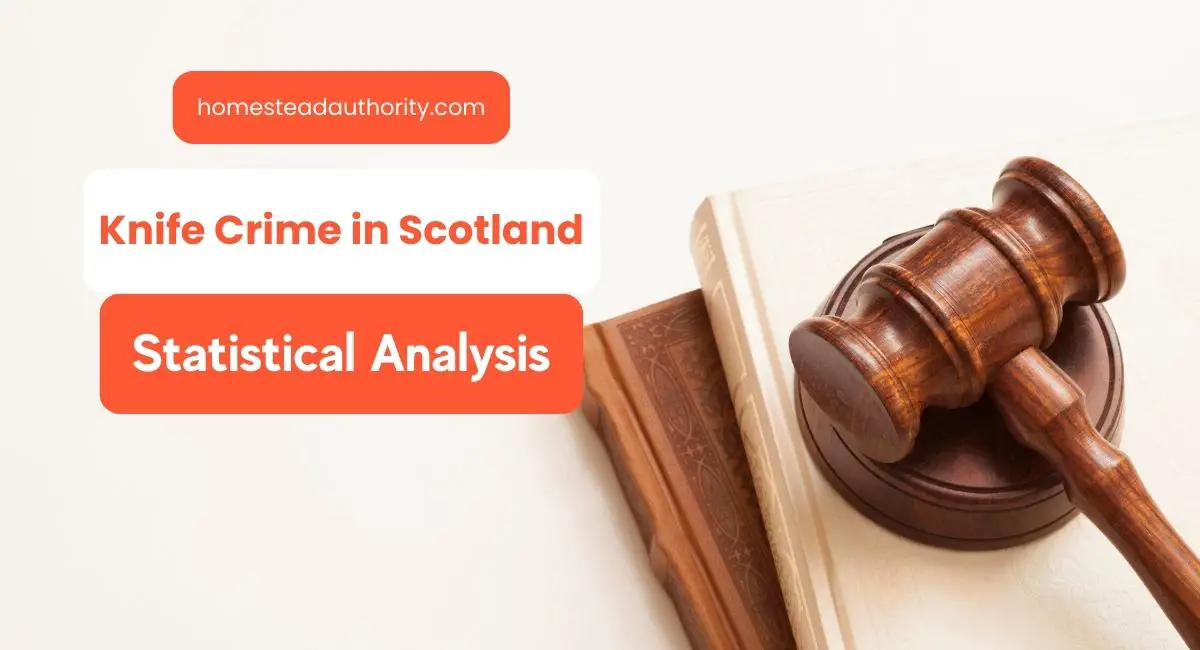Knife Crime in Scotland: A Statistical Analysis
Knife crime has emerged as a pressing concern in Scotland, with statistics painting a grim picture of its prevalence and impact. In recent years, the country has witnessed a surge in incidents involving knives, prompting authorities to delve deeper into the root causes and devise effective strategies to curb this alarming trend.
By examining pertinent government reports and statistical data, this article aims to shed light on the phenomenon of knife crime in Scotland, its underlying factors, and the measures undertaken to address this complex issue.
Rising Incidence of Knife Crime: A Statistical Overview
The statistical trajectory of knife crime in Scotland reveals a troubling escalation in recent years. According to the latest figures released by the Scottish Government, there were 5,761 recorded crimes involving knives or sharp instruments in 2020-21, marking a significant increase from the previous year’s figure of 5,224 incidents. This surge represents a 10% rise in knife-related crimes, underscoring the magnitude of the challenge confronting law enforcement agencies and policymakers.

Delving deeper into the statistics, it becomes evident that certain demographics are disproportionately affected by knife crime. Young people, particularly males aged between 16 and 30, constitute a significant proportion of both perpetrators and victims. Moreover, urban areas, including Glasgow, Edinburgh, and Aberdeen, emerge as hotspots of knife-related violence, reflecting the complex interplay of social, economic, and environmental factors driving this phenomenon.
Exploring the Root Causes
Understanding the underlying drivers of knife crime is essential for formulating targeted interventions and prevention strategies. While the root causes are multifaceted and context-specific, several common factors have been identified through empirical research and government inquiries.
Social Deprivation
Economic marginalization and lack of access to opportunities exacerbate feelings of alienation and hopelessness among disadvantaged communities, increasing the likelihood of involvement in criminal activities, including knife crime.
Gang Culture
The proliferation of gangs, fueled by factors such as poverty, social exclusion, and limited educational prospects, contributes to the normalization of violence and the use of weapons as a means of asserting power and status.
Drug Trade
The illicit drug trade intersects with knife crime, as rival factions vie for control over lucrative markets, leading to turf wars, retaliatory attacks, and escalating violence on the streets.
Peer Influence
Peer pressure and the desire to conform to social norms within peer groups exert a significant influence on young individuals, potentially leading them down the path of criminality and violence.
Lack of Positive Role Models
Absence of positive role models and mentorship opportunities deprive at-risk youth of guidance and support, leaving them vulnerable to negative influences and criminal exploitation.
Government Response and Policy Initiatives
Recognizing the urgency of addressing the scourge of knife crime, the Scottish Government has adopted a multi-faceted approach encompassing legislative measures, law enforcement strategies, and community-based interventions. Key initiatives include :
Tougher Sentencing
Legislative reforms aimed at imposing stricter penalties for knife-related offenses, including mandatory minimum sentences for possession and use of knives in certain circumstances.
Early Intervention Programs
Investing in early intervention programs targeting at-risk youth to address underlying risk factors, promote positive behavior, and divert individuals away from criminal activities.
Youth Engagement
Engaging with young people through youth outreach programs, educational initiatives, and recreational activities to provide constructive alternatives to antisocial behavior and gang involvement.
Community Policing
Enhancing community policing initiatives to foster trust and collaboration between law enforcement agencies and local communities, thereby facilitating intelligence-gathering and crime prevention efforts.
Tackling Socioeconomic Inequality
Implementing measures to alleviate socioeconomic disparities, improve access to education, employment, and social support services, and create opportunities for socio-economic mobility in disadvantaged areas.
Conclusion
In conclusion, the surge of knife crime in Scotland represents a complex and multifaceted challenge with far-reaching social, economic, and public health implications.
While statistical data offer valuable insights into the scale and scope of the problem, addressing the root causes demands a holistic and multi-agency approach encompassing prevention, intervention, and enforcement strategies.
By investing in early intervention, community empowerment, and targeted enforcement efforts, Scotland can strive towards creating safer and more resilient communities where the scourge of knife crime is effectively addressed, and every individual can fulfill their potential free from the specter of violence.







